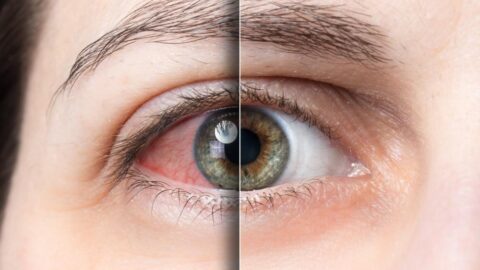Ptosis is an ophthalmic problem that seriously affects aesthetics. In addition to this, does it have other harmful effects, and is it dangerous? This problem will be clarified in the following article.
Overview
Ptosis is a condition in which the upper eyelid drops lower than its normal position when a person looks straight ahead. It can occur in one eye or both, with or without proportional drooping.
There are 3 types of ptosis, classified according to the degree of drooping or the impact on patients’ vision:
- Degree I (mild): Does not affect patients’ vision.
- Degree II (moderate): Affects patients’ vision moderately. To observe, patients must raise their chin.
- Degree III (severe): Affects patients’ vision severely and should be treated immediately.
Causes
The causes for this condition are very diverse. A person can have congenital ptosis, ptosis due to age, physical injuries, or other diseases.
- Congenital ptosis: accounting for 55-75% of total cases, is also the most common form. It appears as soon as patients are born and may be associated with, for example, refractive, ophthalmic, or craniofacial abnormalities. Patients in this category mostly have unilateral ptosis.
- Age: only occurs to the elderly – when the levator palpebrae superioris which is responsible for helping the eyelids move, stretch or tear suddenly.
- Physical injuries: Injury from rubbing eyes continuously for a long time, using low-quality contact lenses, eye surgery, etc.
- Other diseases: Cysts in the eyes, muscle problems, nerve problems, etc.
Is ptosis dangerous?
It can be confirmed that the condition is a dangerous ophthalmic problem. It affects patients’ vision and can cause amblyopia or strabismus, etc. if left untreated. Sometimes, it is not a separate problem but a manifestation of another disease such as myasthenia gravis, cranial nerve III palsy due to brain tumor, etc. If these diseases are not treated promptly, they can lead to patients’ death as a result.
Diagnosis and treatment
Ptosis does not only affect aesthetics but also affects vision and health; therefore, patients should visit reliable ophthalmology medical facilities as soon as possible.
Diagnosis
At ophthalmology medical facilities, this condition is diagnosed via clinical examination and subclinical examination:
- Clinical examination: Mainly extracting information from patients such as family medical history, ptosis’s appearance, and development, abnormalities associated with it, treatments applied to patients, detailed progress during and after each treatment, etc.
- Subclinical examination: This can be testing, diagnostic imaging of otolaryngology, maxillofacial, endocrine, thoracic, or neurological areas.
Treatment
After diagnosis, depending on the severity and causes, the ophthalmologist will prescribe an appropriate treatment for patients. Although the methods of treatment can vary, the procedure will always be: Firstly, treat the cause. Secondly, treat ptosis or perform blepharoplasty. Thirdly, treat its complications and associated injuries such as eye movement disorders, etc.
Regarding the treatment of ptosis, there are 2 surgeries that ophthalmologists can assign to patients:
- Upper eyelid shortening: Suitable for patients with good eyelid muscle function. This surgery can preserve the function of eyelid muscles, ensuring synchronization between the eyelids and the eyeball, as well as aesthetics. However, ptosis is prone to recur.
- Surgery using adjacent muscles’ support: Suitable for patients with poor or absent eyelid muscle function. However, this surgery does not improve eyelid muscles’ function nor ensure synchronization between the eyelids and the eyeball. It also makes patients’ eyelids difficult to close after surgery.










